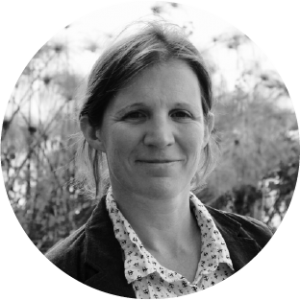BLOG
How do you create change in the face of complex systems challenges?
BY KATE SIMPSON
What do you do when faced with a problem so vast so complex and so confusing that you can’t really work out what’s going on and have little idea what to do or where to start? The short easy answer is – you don’t work on it; the longer, harder answer is you work on the conditions that create the problem. You work not to change the problem but to change the patterns of governance, relationships, incentives, rewards and rules that produce the problem. Change these and you might just change everything.
Our lives, our organisations and our world are full of complex problems. It could be how to raise smallholder incomes in West Africa or sustain a National Health Service in the UK; or perhaps food insecurity in the Horn of Africa or graduation from poverty in Bangladesh; or even the future of employment in a world of artificial intelligence, the gender pay gap or the displacement of pastoralists in Northern Kenya. These are the sort of problems we cannot afford to ignore, yet we struggle to know how to tackle.
Thirty plus years of systems thinking and complexity theory have helped us understand why these sorts of problems are quite so hard to work with. We know that they are problems with many owners. There is no one person or institution, however well-resourced or intentioned that can drive change alone. We know these are problems with multiple root causes, and that the problem itself is not static and keeps changing. And we also know that these problems are produced by entrenched behaviours and interests because the current situation works at some level for some people. But whilst all this thinking is useful in diagnosing the problem (and understanding just how hard it is going to be to create change) it doesn’t help us know what to actually do or how to do it. But it does point us in the right direction.
Complex problems are symptoms, not causes. They are the product of a pattern of relationships, rules, incentives and asymmetries of power and information. It is these patterns that produce problems such as stubbornly low African smallholder incomes, depletion of fish stocks, or brownouts of electricity supply. So, by seeking to shift the patterns that produce the problems rather than head on tackle the problem we can see – well then – we know how to start and what to do.
There are many aspects to the patterns that produce complex problems. However, we have found five common dimensions, that offer a route into working on the patterns we want to shift. These dimensions are not sequential. They are not a comprehensive list you need to tick off. Rather, at any given time, in any given context there will be a window of opportunity to shift one dimension or another. And as we know from systems thinking, once you have changed something in the system you need to go back and look at the whole system to see how everything has changed.
Five dimensions for shifting complex systems:
Build shared understanding: within complex problems there are usually many different actors and stakeholders, who often have little understanding or even visibility of one another. Those within the system are often simply unaware of who else is in the system. ELAN RDC’s study on traders on the Congo illuminates this struggle. Here, farmers sell to a fragmented network of small and medium traders, so operators of larger boats lack information on how much produce the traders are holding. As a result, there is often a shortage of boats, especially in more remote areas. Activities that help those within the system better hear, know and understand the whole system enable actions which change the system. Sometimes this dimension is misunderstood as merely analysis, where some actor (usually one who sees themselves in a leadership position) seeks to increase their own better understanding of the system. But this is wrong. This dimension is about processes (not products) that help those in the system share perspectives and so generate a better SHARED understanding.
Secure commitment: Given that no one individual or organisation can create change alone, shared commitment is essential to any change. This doesn’t mean everyone agrees with each other. That is usually simply impossible in the face of a complex problem. Rather, this is about creating enough commitment amongst enough actors to move forward. And undoubtable compromises will need to be made. It’s easy at this point to keep creating more and more abstract, high level and often vague ‘visions’ in an attempt to include more actors and, often, to avoid dealing with the things people don’t agree on. It is also easy to view this as a ‘one off’ event. However, securing commitment is about getting specific about what, collectively, you will change; it’s about finding compromises and it is about regularly reviewing that commitment. Finally, it is also about constantly holding the door open to others to join in with the commitments that have been created.
Change the dynamics: Every pattern is driven by a set of incentives, rewards, structures and ‘rules of the game’. This is what structures markets, incentivises that drive production, sets the rules for exchange and rewards for, well, everything! Some of these will be explicit and formal like exchange rate controls and many will be implicit and informal such as Nigerian’s preference for imported Thai Rice. Often, these dynamics will be stacked in favour of the powerful few. Disrupting, changing and sometimes just making visible these dynamics, even in quite subtle ways, will change the pattern.
Enable co-ordination: Patterns and markets that serve the few and not the many are made up of disparate stakeholders, separated by some combination of geography, politics, education and power. Yet change is going to require collaboration, and this needs some form of co-ordination. Such coordination is not a ‘one off’ meta-organisation that seeks to centralise power and control, rather it is multiple formal and informal channels, some of which may exist for a limited time as actors co-ordinate around specific time bound issues. Across Africa, cross-sector leaders have worked to make agricultural markets both more inclusive and more productive. Central to this effort has been the development of co-ordination platforms and forums so that farmers, governments and private sector actors can generate the collaboration it will take to remove barriers, catalyse investment and ensure inclusivity. Coordinating bodies like the SAGCOT Centre in Tanzania, or the ATA in Ethiopia rarely hold any power over others. They don’t control resources. Instead they act as what Mark Kramer and Marc Pfitzer called ‘backbone organisations’(1), convening others. They are the DJ in the night club; they can’t make you get up and dance, but they make it more likely that if you do, you won’t be dancing alone.
Augment learning: Information holds patterns together and determines how, and for whom, they work. Learning is how we update and expand that information. Typically, complex problems have significant asymmetries of information. Some actors hold much more information and are more able to get feedback (learning) from the system than others. This is particularly true with markets. It is the asymmetries of information that allow the few to profit at the expense of the many. Key in making markets more inclusive is increasing who has access to information about the market, and how quickly they can learn. There are many examples of how such an approach has been used within M4P programmes, as well as emerging through the increased accessibility of technology. But technology is not the only route, sometimes it is about making sense of information people already hold. For examples the “Farming as a Business” training run by Prorustica that helped Tanzanian farmers better understand their profit and loss and cash flow. Armed with that information they could make different choices that were right for them and transformative to their incomes.
Tackling complex problems is not easy, but it is possible. By seeking to shift the patterns that produce the problems, we change how we engage in meaningful and practical ways. We can create more inclusive, sustainable and fairer markets for all.
Five questions to ask when working on a complex problem:
- What actions could you take that would help others better understand the pattern they are part of?
- How clear and shared is the current commitment to change – are there actions that would deepen commitment, create accountability or invite others to join in?
- How clear are you on the ‘rules of the game’ that drive the pattern you are trying to shift, are there existing interventions that could be harnessed change fundamental dynamics?
- Are there opportunities to bring disparate stakeholders together in temporary or permanent ways?
- Who dominates the information flows and learning within your complex problem, is there action you could take to create higher quality and more inclusive flows?
References:
For more on working with systems see ‘Systemcraft’ www.wasafirhub/systemcraft.com and download the free Guide
(1) Kramer and Pfitzer (2016) Harvard Business Review The Ecosystem of Shared Value https://hbr.org/2016/10/the-ecosystem-of-shared-value
Author Bio
Kate is MD of Wasafiri. She has been an academic, an educator and a leader working across public, private and not for profit organisations. Above all, she keeps asking questions about how change really does happen – for individuals, organisations and societies.






